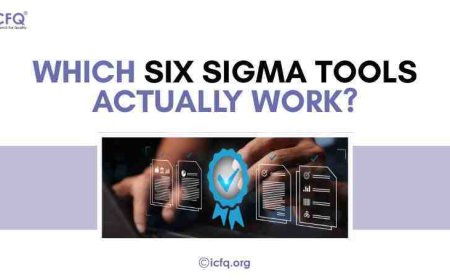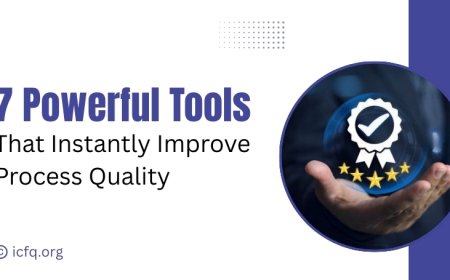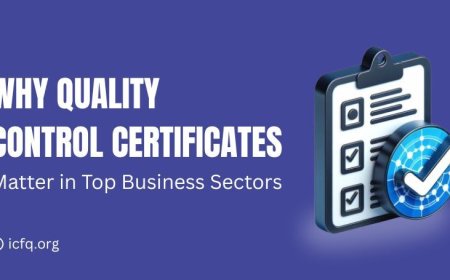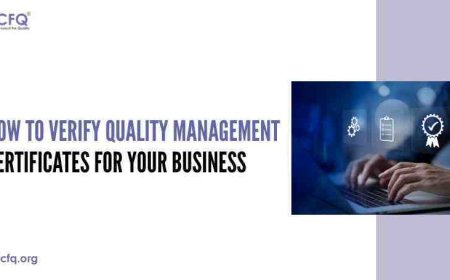The key success of the Six Sigma Yellow Belt certification
Achieve success with Six Sigma Yellow Belt Certification. Master essential skills for process improvement and enhance your career prospects.

Six Sigma Yellow Belt Certification is like the starting point for understanding how to make things better in a company. It's like learning the basics of Six Sigma, where you get the basic knowledge and skills to help improve quality. Think of it as having the tools to spot problems, gather information, and be part of finding solutions.
Yellow Belts work alongside more experienced Green or Black Belts, supporting bigger improvement projects. They learn about important Six Sigma concepts and tools, like DMAIC, which help in problem-solving.
This certification is important because it helps create a culture of always trying to make things better in a company. By starting with the basics as a Yellow Belt, individuals set themselves up to contribute more to quality improvement efforts in their workplace.
Difficulties
Pursuing Six Sigma Yellow Belt certification comes with its fair share of challenges for individuals. Navigating these challenges demands patience, perseverance, and a strategic approach to ensure success in obtaining Six Sigma Yellow Belt certification
Understanding the certification process can be perplexing due to its specific requirements and unclear starting points. Balancing study with other commitments, such as work and personal life, demands careful planning and prioritization. Additionally, identifying credible training programs from the plethora of options available poses a significant challenge, adding complexity to the certification journey.
Overcoming obstacles like difficulty grasping concepts or unexpected setbacks requires persistence and determination. Despite these challenges, with strategic planning and perseverance, individuals can successfully navigate the path to Six Sigma Yellow Belt certification.
Key Success of the Six Sigma Yellow Belt Certification
The key to achieving success in obtaining Six Sigma Yellow Belt certification lies in implementing effective strategies tailored to individual needs. Here are some practical approaches:
-
Understand Requirements: Carefully review the certification process and prerequisites, ensuring you meet all necessary criteria before proceeding.
-
Manage time effectively: Develop a structured study schedule that allows for consistent and focused study sessions while still accommodating work and personal commitments.
-
Choose a quality training program: Research and select a reputable training provider that offers comprehensive coverage of Six Sigma Yellow Belt concepts. Look for programs that provide accessible resources and support to aid in your preparation.
-
Face Challenges Head-On: Anticipate and prepare for obstacles that may arise during your certification journey. Seek assistance from mentors, peers, or online communities to overcome difficulties and stay motivated.
-
Embrace Continuous Learning: Adopt a growth mindset and remain open to learning and improvement throughout the certification process. Continuously seek out opportunities to expand your knowledge and skills in Six Sigma methodologies.
Certification Requirement:
To ensure eligibility for Six Sigma Yellow Belt certification, follow these structured steps:
-
Review Prerequisites: Begin by carefully examining the prerequisites outlined by the certification body. These may include having a basic understanding of quality management principles and familiarity with Six Sigma concepts.
-
Assess Work Experience: Check if there are any specific work experience requirements. Some certification programs may require a minimum number of years working in a relevant field or industry.
-
Check Educational Background: Verify if there are any educational requirements, such as a high school diploma or equivalent qualification.
-
Understand Training Requirements: Determine if completion of specific training courses or programs is necessary for certification. Some certification bodies may require candidates to undergo formal training to qualify for the exam.
-
Review Exam Format: Familiarize yourself with the format of the certification exam, including the types of questions and topics covered. This will help you tailor your preparation strategy accordingly.
SUITABLE TRAINING PROGRAMS:
By following these steps, you can find the right training program that fits your needs and helps you achieve Six Sigma Yellow Belt certification.
- Explore Options: Look into different training programs available for Six Sigma Yellow Belt certification. Search online and ask for recommendations.
- Check Curriculum: Make sure the program covers all the topics needed for Yellow Belt certification.
- Choose Delivery Method: Decide if you prefer online courses, in-person workshops, or self-study materials based on your learning style and schedule.
- Review Instructors: Check the qualifications and experience of the instructors. Make sure they know their stuff.
- Read Reviews: See what others have said about the program. Look for reviews and recommendations from people who have taken it before.
- Consider Cost: Compare the costs of different programs and what you get for your money.
Effective preparation for the exam:
- Set a study schedule: Plan regular study sessions leading up to the exam.
- Know the Exam Content: Understand what topics will be covered and how the exam is formatted.
- Use Study Resources: Make use of study guides, online tutorials, and practice exams.
- Practice problem-solving: Solve problems and case studies to apply what you've learned.
- Review Regularly: Go over the material frequently to reinforce learning.
- Ask for Help: Don't hesitate to seek clarification from instructors or peers if needed.
- Stay Calm: Practice relaxation techniques to manage exam stress and maintain confidence.
Navigate the Crtification Journey
Navigating the certification journey for the Six Sigma Yellow Belt requires effective time management and overcoming obstacles.
Plan your study time wisely, breaking down tasks into manageable chunks and staying organized with a schedule. When facing challenges like difficult concepts or unexpected setbacks, stay persistent and seek assistance when needed. Keep yourself motivated by setting achievable goals and celebrating your progress. With dedication and perseverance, you can successfully navigate the path to Six Sigma Yellow Belt certification.
Emphasize Growth
By adopting a mindset of continuous growth and development, you can stay ahead of the curve, remain relevant in the field of Six Sigma, and continue making meaningful contributions to your organization's success.
-
Stay Updated: Keep learning about new Six Sigma methods and industry trends through books, articles, and workshops.
-
Practice Skills: Apply what you've learned in real-life situations at work or personal projects.
-
Expand Knowledge: Explore advanced Six Sigma concepts to deepen your understanding.
-
Network: Connect with other professionals in the Six Sigma community to share experiences and learn from each other.
Securing Six Sigma Yellow Belt certification is vital for personal and professional growth. It provides essential skills and opens doors to new opportunities. Encourage readers to approach their certification journey with confidence, using the strategies provided. Emphasize the importance of time management, overcoming obstacles, and continuous learning. Assure them that, with determination, success is attainable. Remind readers that the journey signifies a commitment to lifelong growth and excellence. By embracing this journey, individuals can unlock new opportunities for personal and professional development, setting themselves on a path toward success and fulfillment.





























